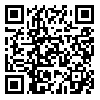Background & Objectives: When education is combined with entertainment, it has significant effects on academic and psychological components. The aim of the present study was to investigate the effectiveness of edutainment on academic achievement motivation and test anxiety of third grade male students. The multitude and complexity of the things that humans need to learn today have led psychologists and education experts to focus on using more efficient teaching methods on a daily basis. Today, the presence of technology in various areas of human life has allowed educational situations to benefit from this opportunity. Some scholars believe that the learning process should always be colorful and entertaining and that information can be acquired without serious work and study. This shows that it is essential to know that education is about developing cognitive structures and that educational technology is a medium, not a mere education, which is useful in creating such a learning environment. Today, the presence of technology in various areas of human life has caused educational situations to benefit from this opportunity. Therefore, numerous educational methods based on new technologies have been introduced to the world of learning. Learning through play is a natural way to acquire knowledge and skills.
Methods: The research method in this study was a semi-experimental study with a pre-test-post-test control group design. The statistical population of the study all elementary school classes of Noavaran Andisheh Boys' School in District 3 of Tehran in the academic year 2020-2021, which was 49 people. The sample size of this study was 30 eligible third-grade elementary school volunteer students who were recruited through purposive sampling from two classes of this school and were randomly assigned to two experimental and control groups (15 in the experimental group and another 15 in the control group). The samples responded to two Hermans Achievement Motivation Questionnaires (1970) revised by Hooman and Asgari (1990) and Abolghasemi Test Anxiety Questionnaire (Abolghasemi et al., 1996) in two stages of pre-test and post-test. The experimental variable in this study, which is the game "Kahoot" (Oslo, 2012), was presented to the subjects of the experimental group for 20 sessions. The data were analyzed using the multivariate analysis of covariance method. The P value was considered to be 0.05. To confirm the validity of the learning tool, the teachers were used. The teachers also evaluated and confirmed the tools in terms of relevance, clarity and understandability of the questions. The reliability of this tool was also calculated using the Cuder-Richardson method, 0.77.
Results: The results of the analysis of covariance were examined separately for each of the variables under study, and it was determined which of the dependent variables the independent variable had a significant effect on. The assumptions of multivariate analysis of covariance, such as normality of error score distribution, homogeneity of variances, data correlation in the population, and the same slope of the regression line between the pre-test and the experimental variable, were examined in this study. The results showed that there was a significant difference between the experimental and control groups in terms of academic achievement motivation and test anxiety due to the application of the experimental variable (edutainment method). (P < 0.001)
Conclusion: Therefore, it can be concluded that educational methods based on entertainment can be effective in increasing motivation and reducing anxiety in children.
| Rights and permissions | |
 |
This work is licensed under a Creative Commons Attribution-NonCommercial 4.0 International License. |



